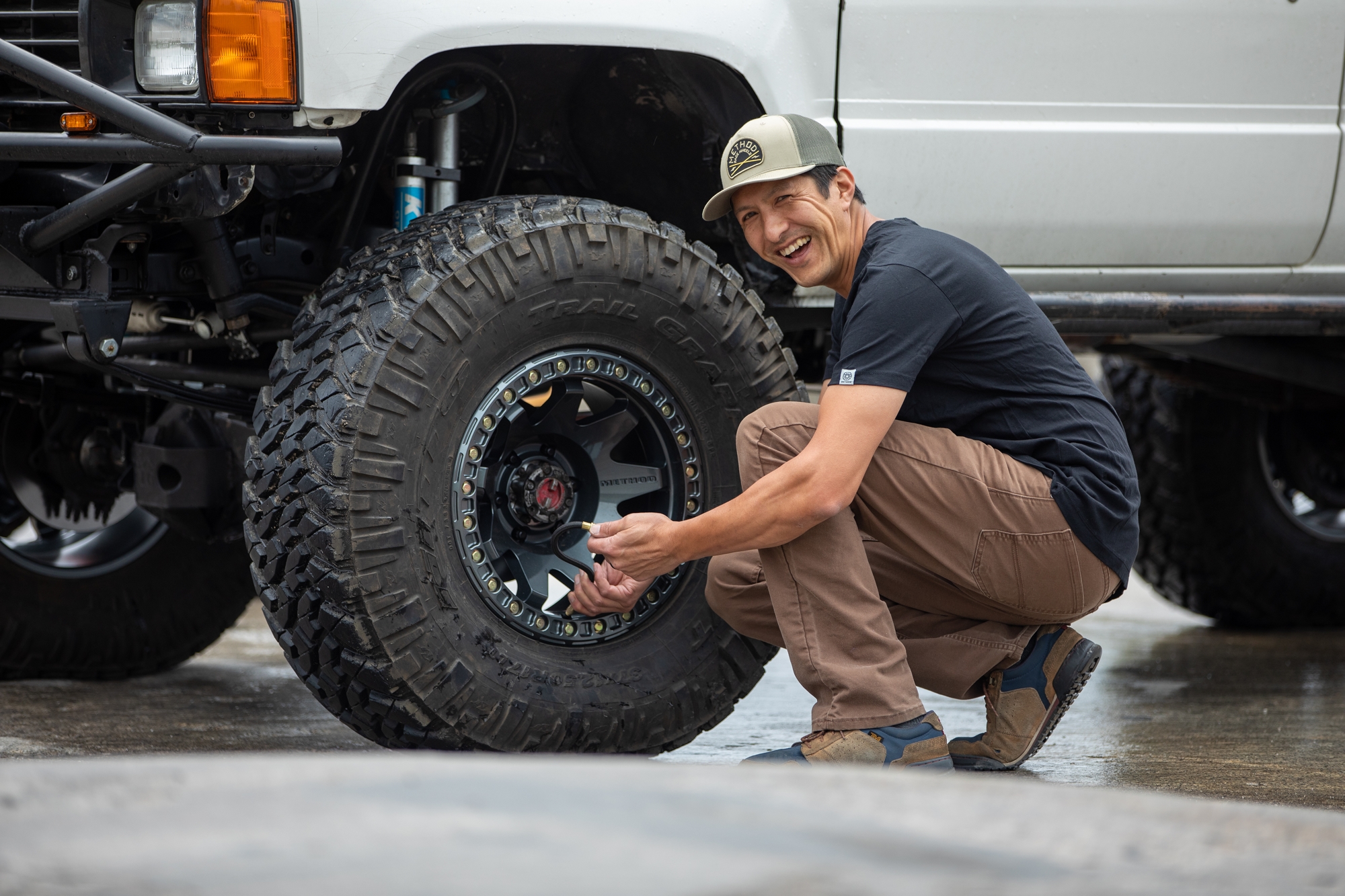
Photography by Harry Wagner
One of the most common questions we hear is “What air pressure do you run on the trail?” and our answer is “It depends.” What does it depend on? Factors including the vehicle weight, tire construction, terrain, tire width, sidewall height, and wheel width. Keep reading to learn how these factors will assist you in determining the best tire pressure to run on the trail.
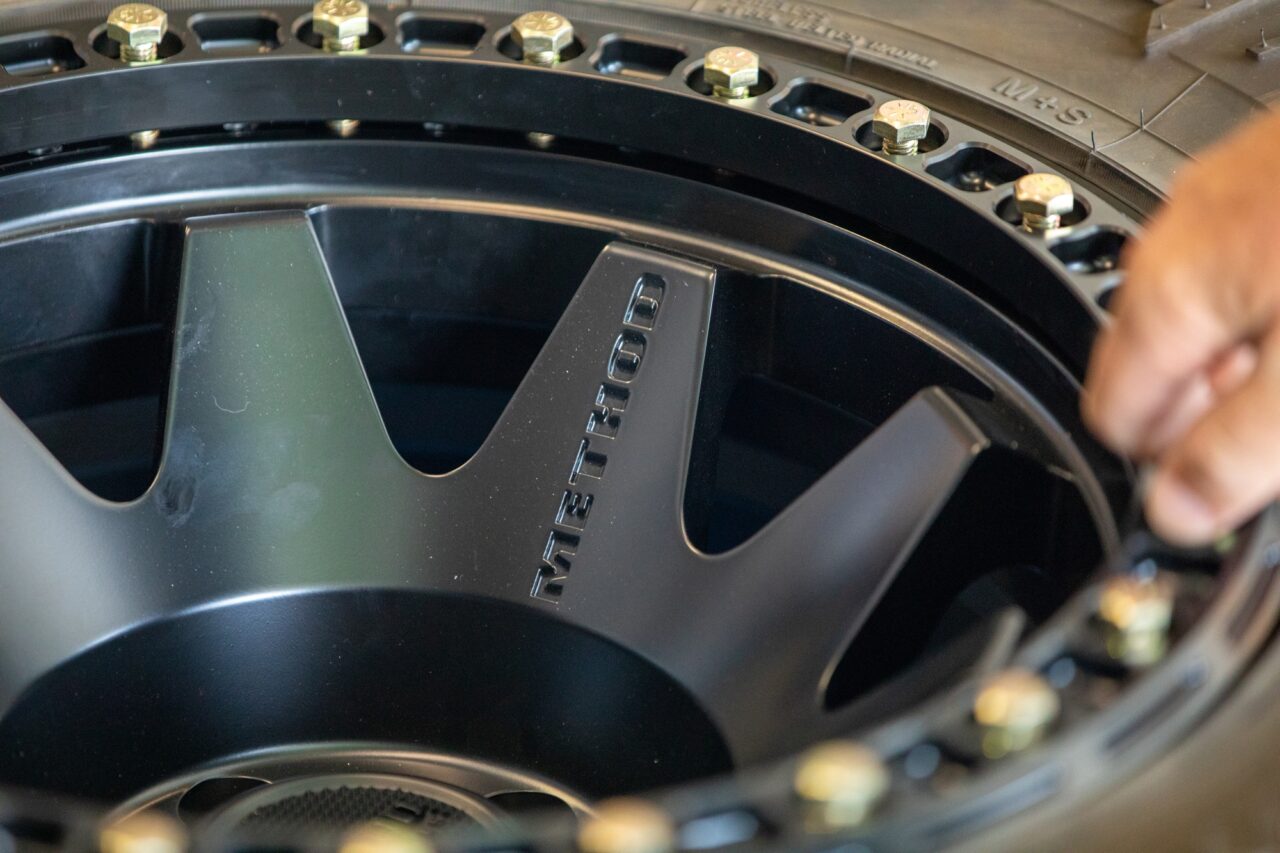
If you are running beadlock rims you can typically safely go down to single digit pressures on the trail without being concerned about the tire coming off the rim. Wheels like these Method beadlocks physically clamp the tire between the wheel and the ring to not only keep the tire from debeading but also prevent the tire from moving on the rim and affecting your tire balance.
Beadlock Rims
When most people think about airing down, the first thing they think about is beadlock wheels. If you are running single digit air pressure on the trail, then beadlocks are for you. These work by physically clamping the bead of the tire between the wheel and the ring. They typically only bolt the outer bead, although some wheels such as Hutchinson Rock Monsters actually keep both the inner and outer bead in place. There are downsides to beadlocks though that are not often discussed. They are more expensive, heavier than traditional wheels, and all of those bolts require additional maintenance. You can still air down your tires on the trail though even if you do not have beadlocks.
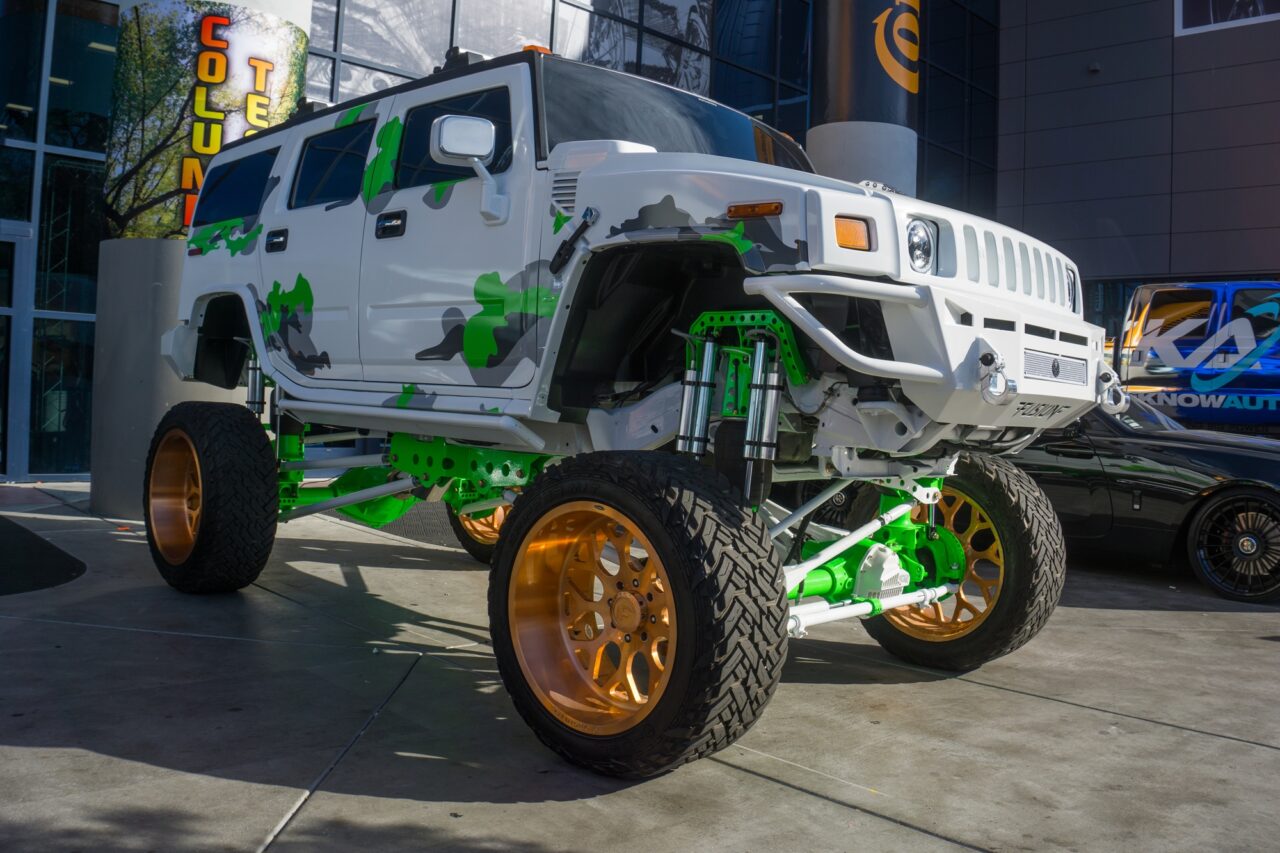
A popular movement in the show truck world is to run low profile tires on the largest possible rims, and also to stretch a tire onto a wide wheel. Some people are fond of this look, but it is not practical on the trail due to the lack of sidewall and the tire wanting to peel off of the wide wheel.
Rim Width Relative to Tire Width
The more sidewall a tire has, the more leeway you have in how wide of a wheel you mount it on. Consider that an LT245/70R17 Nitto Terra Grappler G2 has a recommended rim width of 6.5-8 inches, only a 1 1/2-inch range. By comparison, the same tire in a 37×12.50R17LT has a recommended rim width of 8-10.5 inches, a 2 1/2-inch range. This is because the sidewall on the 37 is ten inches tall, and the sidewall on the 245 is only 6 1/2-inches tall. We typically err on the narrow side when selecting wheels, as this increases the pressure in the bead area and allows lower air pressure to be run on the trail without the risk of losing a bead. The tradeoff is that at normal inflation pressures on the street, a tire mounted on a narrow wheel can crown and wear out the center of the tread prematurely.
Most tires are only available in a given size with one load rating, so if you want to run… for instance a 35-inch tall Pro Comp Xtreme MT2 you are going to end up with a Load Range E tire capable of carrying 3,195 pounds each at maximum inflation pressure. These would require you to air down further on a relatively light Jeep or Toyota to achieve the same contact patch as you would get on a full size truck at a higher inflation pressure.
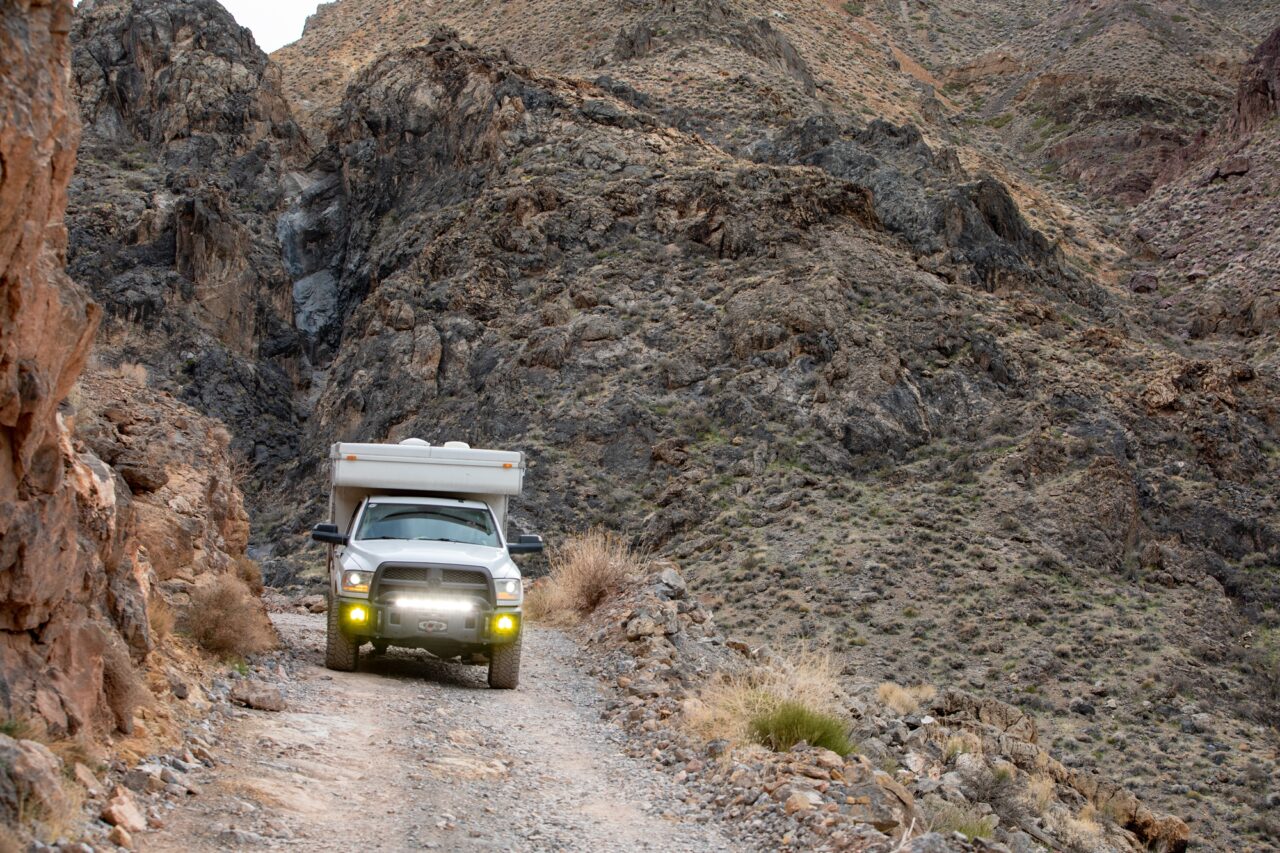
This Ram 3500 with a slide in camper tips the scales at 11,000 pounds. On the street we run 65 psi in the tires, so airing down to 30 psi is a big reduction. In contrast, 30 psi is the air pressure we run on the pavement in our 4,700-pound Jeep.
Tire Construction and Vehicle Weight
Not all tires are created equal. Tires with higher load ratings are capable of carrying more weight, but they do so by having stiffer construction. For instance, BFGoodrich makes the All-Terrain KO2 in a 265/70R17 rated to carry 2470 pounds at 50 psi and also the same size to carry 3195 pounds at 80 psi. The higher rated tire also weighs eight pounds more (45 pounds versus 53 pounds). Often times, the tire you want to run is only available in one load range for a given size, so whether you want to run 37-inch Toyo Open Country M/Ts on your Super Duty or your Samurai they will be the same tire. You are much more likely to lose a bead on the Super Duty than the Samurai though (all other factors being equal). A tire with a lower weight rating will typically have a more pliable sidewall that better conforms to terrain without the risk of the tire coming off the rim. The tradeoff is that those pliable sidewalls are also more at risk for a puncture, particularly when rock crawling at low inflation pressures.
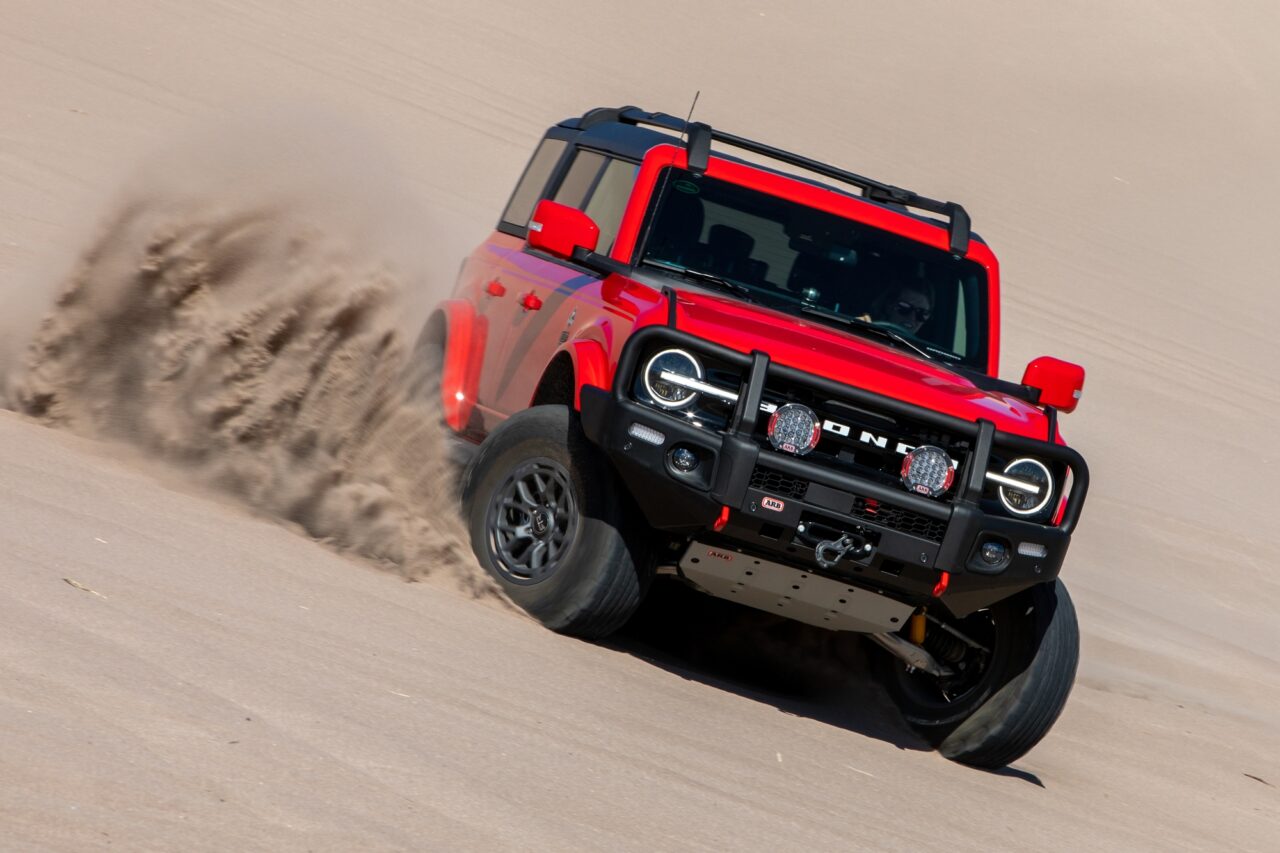
Low air pressure is critical to keep you from getting stuck in soft sand, particularly if you are making aggressive turns. Don’t think that you must have beadlocks though, in most instances you can safely air down to half of the pressure you normally run on the street without concern about losing a bead.
Terrain
Terrain also plays a huge role in what air pressure is optimal. In deep snow and soft sand, we have run as low as 2 psi for a wide footprint to reduce our contact pressure and float on top of the soft surface. These situations definitely require beadlocks, particularly if you are traveling at high speed and carving through the terrain, which can try to peel the tire off the rim. In the rocks, we typically air down to around 12 psi on our 4,700-pound Jeep. This is low enough to increase traction and improve the ride quality while not being so low that we risk a pinch flat, where the tire actually gets cut by the rim when it strikes a large obstacle. At these pressures we have never had an issue losing a bead on the Jeep when running a 37×12.5 tire on a 17×8.5 wheel.
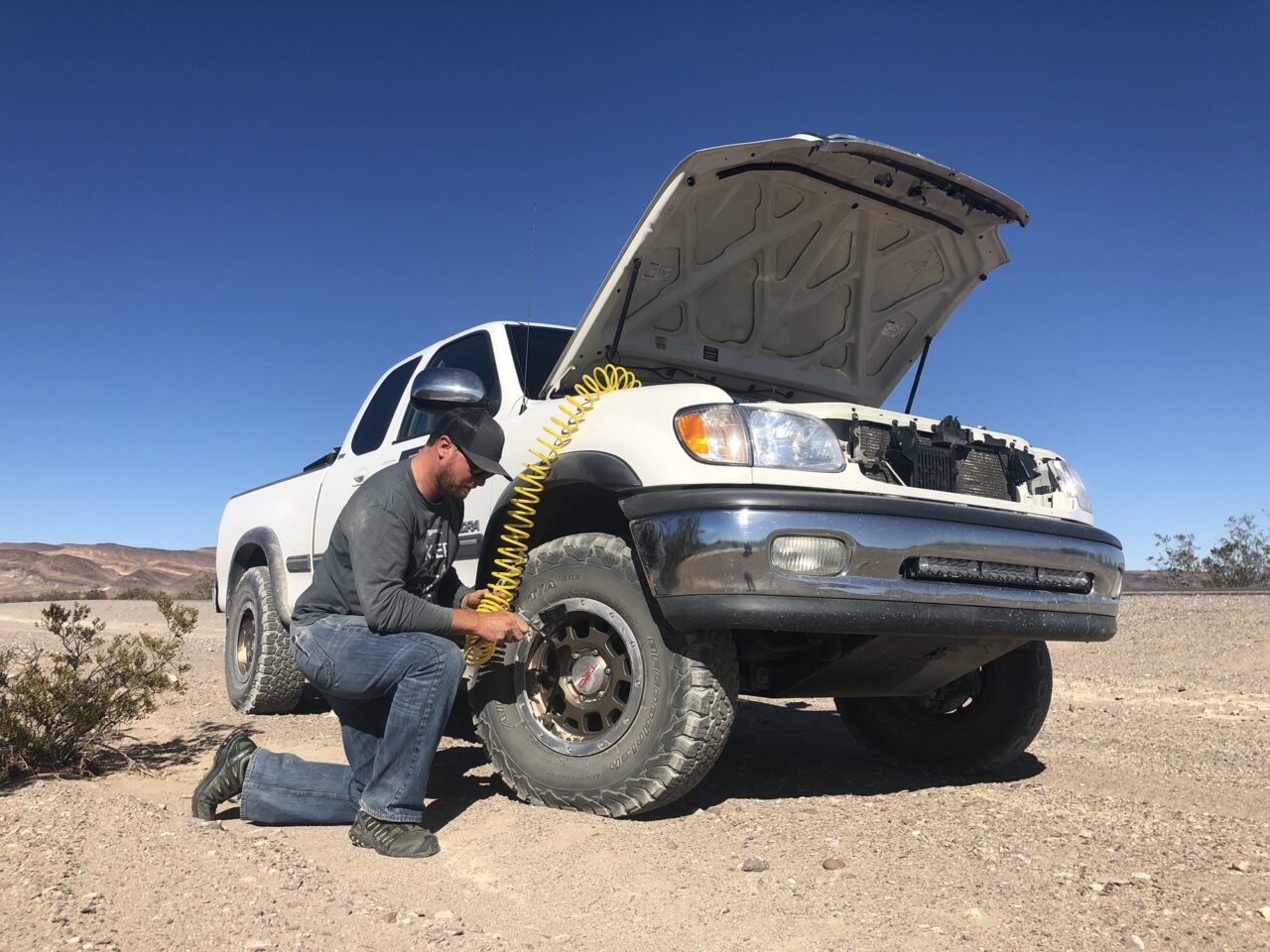
Viair makes a host of air compressors and complete air systems for a variety of applications from airing up tires to operating train horns. On this Tundra’s installation, an air tank was placed inside the frame rail. We let the tank pressurize to 150 psi and then quickly transfer that air to a tire. This is useful not only for airing up but also if you happen to have a tire debead, where a quick blast of air is necessary.
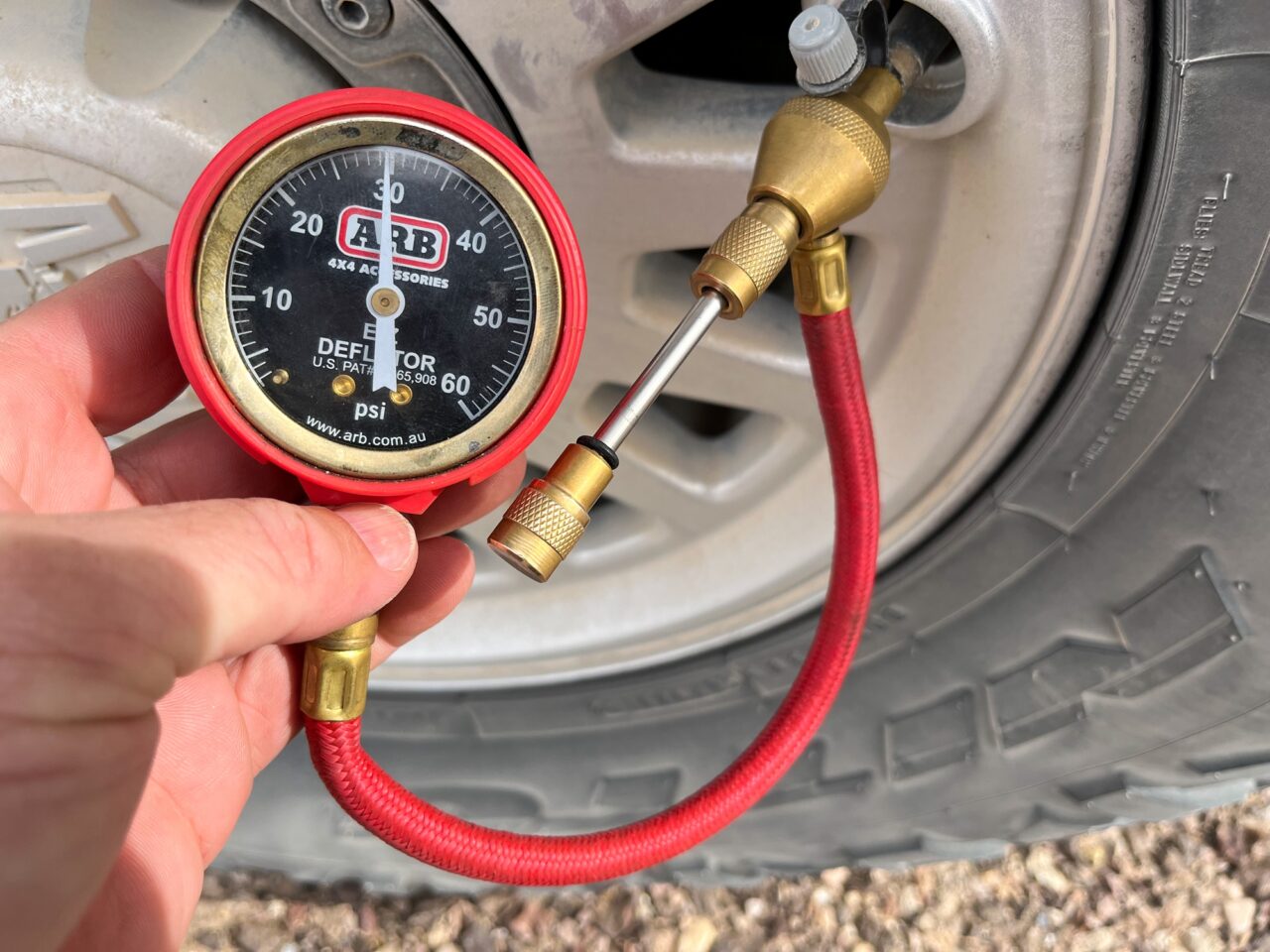
ARB’s tire deflator is an inexpensive and easy way to quickly deflate your tires. These style deflators work by unthreading the valve core and capturing it within the device. For that reason, we recommend having the middle/top portion of the deflator completely pulled outward when threading the deflator on and off the wheel so it does not engage with the valve core at that time.
Airing Down and Airing Up
4WP carries a variety of tools that allow you to release air out of your tires and air them back up after you return to pavement. Lower priced deflators like those offered by Teraflex just push down the valve core and are used in conjunction with a tire gauge. The upside is that these are inexpensive and do not take up much room. Companies including ARB make deflators that remove the valve core from the wheel and are much faster, but you only deflate one tire at a time so the overall time is comparable. These deflators also have an integrated air gauge to let you see exactly what air pressure you are running.
Airing up to the recommended inflation pressure is critical when you get back to the pavement. Low air pressure not only results in poor fuel economy, but all that rolling resistance can cause your tires to overheat to the point of failure if the pressure is too low and the speeds are too high for a sustained period of time. Options range from portable compressors to fixed compressors to CO2 tanks depending on your budget and space constraints. Prices vary widely as well, with more expensive options typically being faster. This is a textbook case of you get what you pay for. Compare the Cubic Feet per Minute (CFM) and duty cycle of compressors when looking at different alternatives and getting a feel for how fast they will fill your tires.



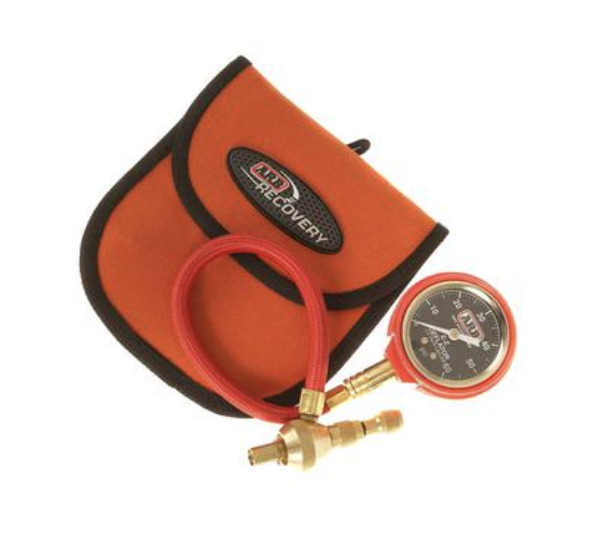
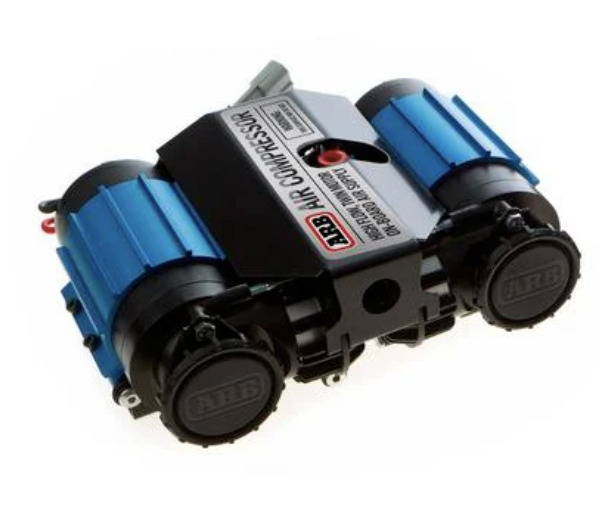
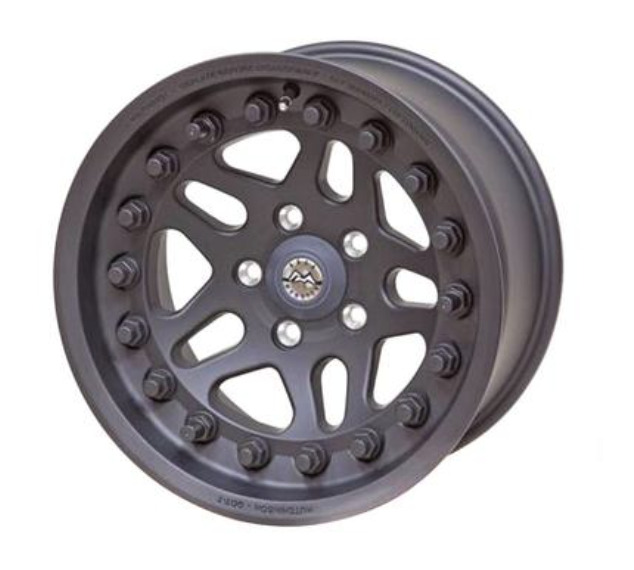
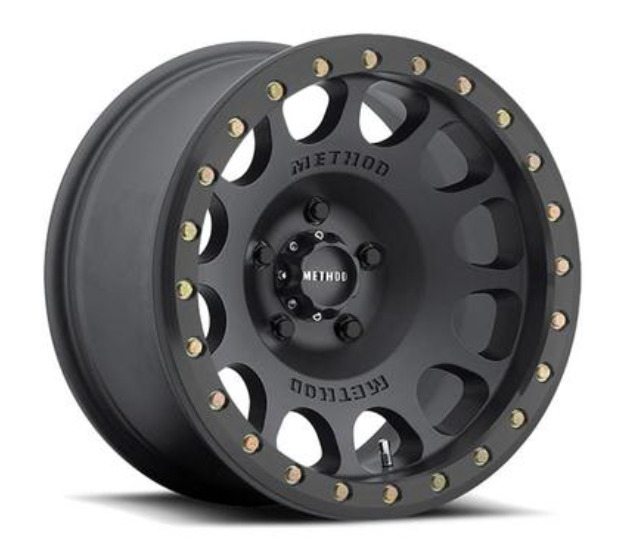
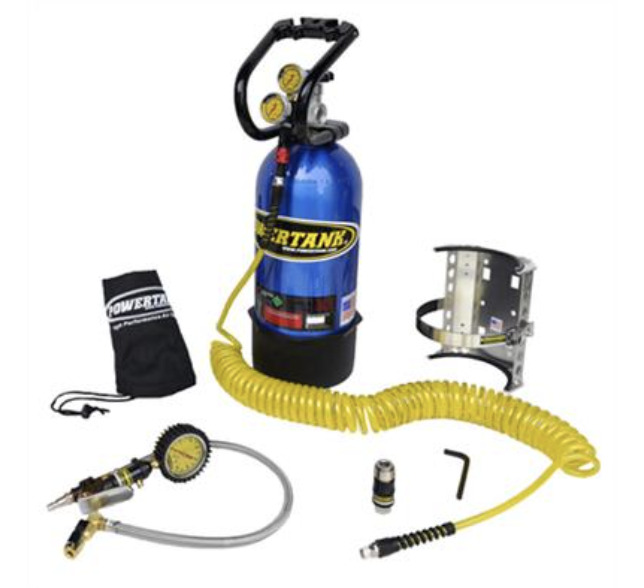
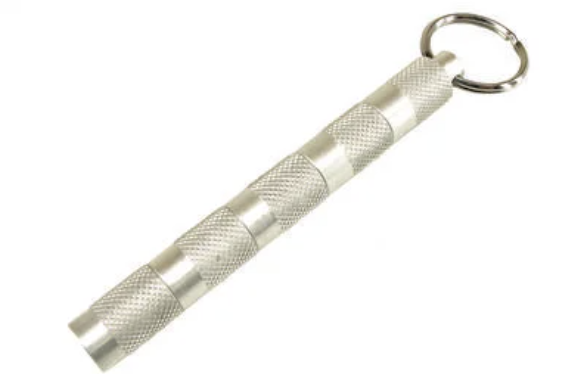
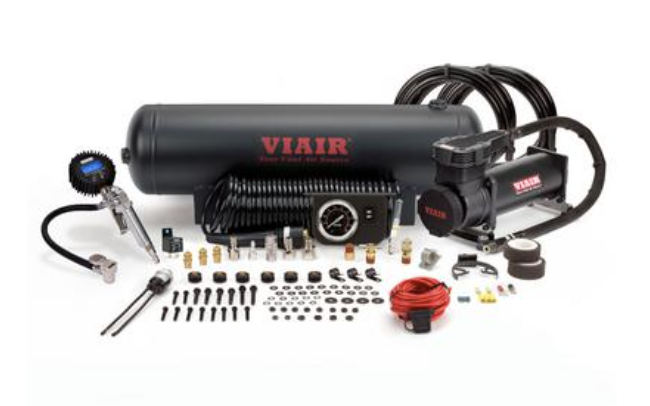
2